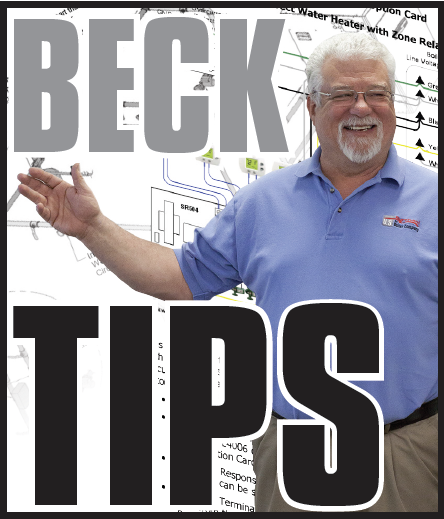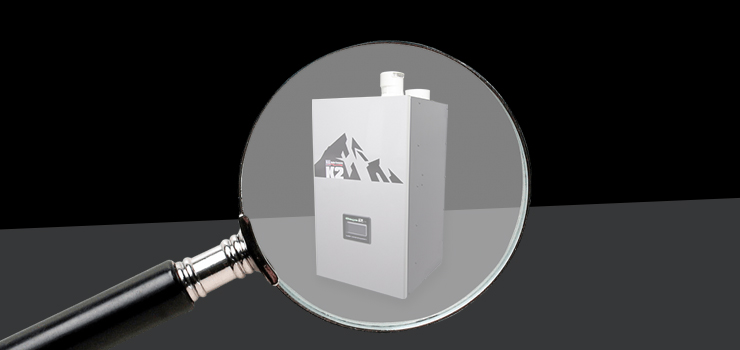
By Ron Beck, Outside Technical Advisor and Manager of Training for U.S. Boiler Company
If a client’s home is not as warm as they want it to be on extremely cold nights, they may question: “Is my boiler too small?” Do not automatically blame the boiler size. Another issue or a mix of several factors could be the cause.
The following is a list of six common things that may keep a home’s heating system from satisfying the thermostat setpoint temperature on very cold days and nights.
- The flow rate in either the boiler or the system may be inadequate. In this case, the Delta-T would be too large.
- The boiler high limit may be set too low.
- There may be too little radiation in the home.
- Carpet may be cutting off airflow under the baseboard. The open area under the radiator should be the height of the legs on the baseboard or cover.
- Dust or pet hair on the bottom side may be clogging the baseboard fins.
Basic questions you must ask to properly diagnose the issue:
- When it was extremely cold outside, did the boiler run continuously or did the boiler cycle on and off without the home reaching the thermostat setting?
- What is the outdoor design temperature for area I’m in, and what was the outdoor temperature when the home was not warm enough?
By evaluating the answers to the above questions, we can determine if the boiler is in fact undersized. Let’s assume the answers are as follows:
- No, the boiler did not run continuously.
- Yes, the boiler cycled on and off but the home thermostat was set to 72°F and the home never got measured above 67°F.
- The outdoor design temperature for my area is 12°F and the outside temperature was actually -9°F.
Let’s evaluate these answers:
- Because the boiler was not running continuously, it’s not too small. When the boiler cycles on and off, it’s producing more BTUs than the radiation can get rid of, which causes the boiler to cycle on high limit. If the boiler was too small, it would run continuously on those very cold nights. The building may not have enough radiation for the lower outdoor air temperature.
- If the boiler is cycling on and off but the temperature does not get to the setpoint, there is another factor at play.
- If using an Outdoor Reset Control and the outdoor air temperature is well below the outdoor design air temperature, this very well could be normal operation. If the outdoor air temperature is not below the outdoor design temperature, there may be a different problem. In this case, there needs to be an adjustment to the outdoor reset parameters.
What are other reasons the home may not be heating properly in extremely cold weather?
- The home could have a lack of radiation for temperatures below outdoor design temperature. If this is the case, even a grossly oversized boiler wouldn’t help. A boiler that’s capable of producing more heat than the system can radiate causes the boiler to cycle off. The heat going into a home is limited to the amount of radiation.
- The flow through the system could be incorrect. An inadequate circulator or improper system piping could be the cause. The Delta-T drop across the system (or loop) could be too great.
- The Outdoor Reset Control could be set improperly – if one is present.
- The high limit setting on the boiler could be too low. Normal setting is 180°F to 200°F depending on boiler and radiation type.
- On standard radiation (cast iron and fin-tube baseboard) not enough airflow across the radiation may be caused by the following:
Dust or pet hair build-up on the bottom of fins of the radiation
Furniture placement or carpet blocking too much air space at the bottom of the radiation. The airspace under the radiation should not be reduced and is sometimes an issue with long shag carpet.
Adjustable vents on some fin tube baseboard may not be completely open.
Covers for cast iron radiation could be too restrictive of airflow.
Drapes might be covering the radiation.
Balancing split zones if certain areas are not warm enough.
Duct coils and kick space heaters are a little different. They can suffer from:
- Dirty coils or air filters.
- Improper fan speed on duct coil fan units.
- Incorrect duct sizing.
- Water temperature too low.
- Delta-T not correct.
Radiant floor installations can be plagued by a completely different set of issues:
- Floor covering too thick or improper selection of material. There are carpets designed for radiant floor heating. Non-carpeted floors are best for radiant floor heating.
- Again, the water temperature could be too low. It could be a bad mixing valve, the setpoint temperature is too low, or the injection system is not working properly (where applicable).
- Flow rate could be too slow.
- There is not enough insulation under the tubing in the floor. My rule of thumb is that the R-value below the tubing must be three times greater than the R-value of the floor covering above the tubing.
I’m skeptical that a boiler is undersized because experience proves that it is rarely the case. In fact, most boilers are oversized, especially in older systems. I’ve been in the heating industry about 40 years and I can only count on one hand the number of undersized boilers I encountered. On the flip side, I don’t have enough fingers and toes – 10 times over – to count the complaints I witnessedwhere the customer thought the boiler was undersized and it was not. Again, unless the boiler is running non-stop, it’s unlikely undersized.
Ron Beck is Outside Technical Advisor and Manager of Training for U.S. Boiler Company, where he’s been since 1998. Ron’s 34 years of experience in the heating industry include climbing the ranks of a HVAC company, from apprentice to service manager. Ron can be reached at: RBeck@usboiler.net

